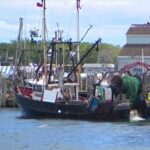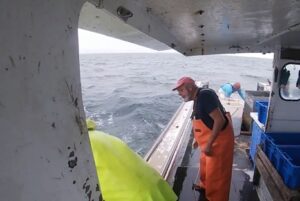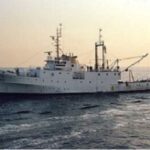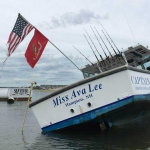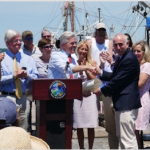Monthly Archives: January 2017
Russell Wangersky: Fish harvesters have the most to lose
 The whole issue is in the hands of the Labour Relations Board right now, so this column is unlikely to sway any votes — and that’s fine. Because, really, it’s fight for those involved. (And just for clarity’s sake, I’ve known Lana Payne, with the FFAW’s parent union, Unifor, since we worked together at The Sunday Express in the late 1980s. I’ve known FISH-NL’s Ryan Cleary since 1997, when he worked at The Telegram, and we get along, on and off.) I understand why the fish harvesters might want to leave the FFAW. The union, representing harvesters and those who work in the processing sector, is juggling a variety of interests, from processing workers to inshore fish harvesters to offshore trawler workers. And that does create problems. Read the op-ed here 09:10
The whole issue is in the hands of the Labour Relations Board right now, so this column is unlikely to sway any votes — and that’s fine. Because, really, it’s fight for those involved. (And just for clarity’s sake, I’ve known Lana Payne, with the FFAW’s parent union, Unifor, since we worked together at The Sunday Express in the late 1980s. I’ve known FISH-NL’s Ryan Cleary since 1997, when he worked at The Telegram, and we get along, on and off.) I understand why the fish harvesters might want to leave the FFAW. The union, representing harvesters and those who work in the processing sector, is juggling a variety of interests, from processing workers to inshore fish harvesters to offshore trawler workers. And that does create problems. Read the op-ed here 09:10
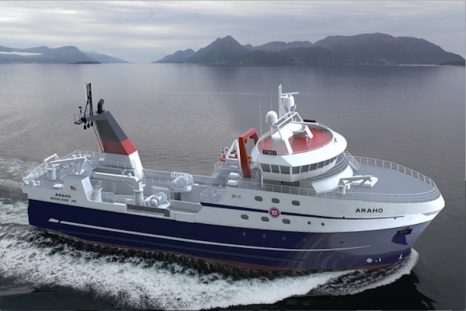
Steaming toward Seattle, New US factory freezer/processor vessel Araho
The new Araho is a 59.13 metres factory stern trawler with a 14.94 metre beam, built to a Skipsteknisk ST-115 design. It has been built for demersal trawling and is capable of processing and freezing approximately 100 tonnes of H&G flatfish per day. It has an 1100 cubic metre refrigerated hold. This is the sixth new build from Eastern Shipbuilding for the O’Hara Corporation over the last twenty years and by far the largest and most sophisticated vessel, as the first US factory freezer/processor vessel to be built in the USA for 25 years. Video, read the story here 08:18
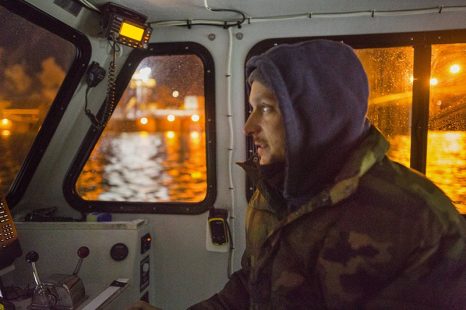
Tim Rider’s small-scale commercial operation – the only full-time one in New England pulling in groundfish by rod and reel
Chef Benjamin Hasty, owner of Thistle Pig in South Berwick, was having a beer with a co-worker at 7th Settlement, a brewpub in Dover, New Hampshire, when he saw Tim Rider walk by, carrying fresh fish to the pub’s kitchen. “We kept seeing someone schlepping these big totes of fish going by us,” Hasty recalled. “I said, ‘I need to introduce myself because I need to get some of that.’ ” Hasty invited Rider, owner of New England Fishmongers, to join him for a cup of coffee. Rider told him he is one of the few New England commercial fishermen who still catches groundfish the old-fashioned way, with a rod and reel; experts believe he is the only one in Maine, and perhaps all of New England, who is doing so full time. Click to see 21 great images Read the story here 07:49
Northeast Fisheries Science Center director steers a new course
It was last Halloween when Jon Hare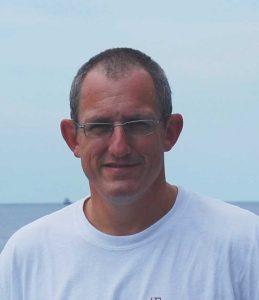 took over as Science and Research Director for NOAA’s Northeast Fisheries Science Center in Woods Hole. He was aware he was jumping into a cauldron but it hasn’t spooked him yet. “I knew it was going to be a challenge and that’s why I was interested in it,” the career NOAA scientist said. Hare does understatement well. The director’s job description includes managing “the living marine resources of the Northeast Continental Shelf Ecosystem from the Gulf of Maine to Cape Hatteras,” according to the NOAA website. If that in itself were not sufficient, these resources include commercial fisheries, and in New England that is synonymous with controversy. Federal fishery management in general, and the efficacy of NOAA’s survey work on fish stocks in particular, have been heavily criticized by fishermen in the Northeast, almost without cessation for the past 15 years and the NEFSC has been at the sharp end of much of this disaffection. Read the story here 20:22
took over as Science and Research Director for NOAA’s Northeast Fisheries Science Center in Woods Hole. He was aware he was jumping into a cauldron but it hasn’t spooked him yet. “I knew it was going to be a challenge and that’s why I was interested in it,” the career NOAA scientist said. Hare does understatement well. The director’s job description includes managing “the living marine resources of the Northeast Continental Shelf Ecosystem from the Gulf of Maine to Cape Hatteras,” according to the NOAA website. If that in itself were not sufficient, these resources include commercial fisheries, and in New England that is synonymous with controversy. Federal fishery management in general, and the efficacy of NOAA’s survey work on fish stocks in particular, have been heavily criticized by fishermen in the Northeast, almost without cessation for the past 15 years and the NEFSC has been at the sharp end of much of this disaffection. Read the story here 20:22
Fishing chiefs insist the industry is doing all it can to adhere to the discard ban
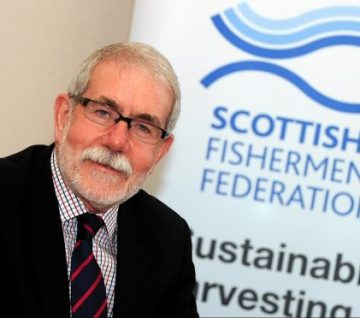 The Scottish Fishermen’s Federation (SFF) insisted fishers were doing “everything possible” to comply with the rules following claims by conservation group WWF the ban is being undermined by poor enforcement. SFF chief executive Bertie Armstrong said: “No-one hates discarding more than our fishermen, who are making a comprehensive effort to comply with this largely unworkable regulation. “Fishermen are doing everything possible to adhere to the rules, and industry and government are working closely together to develop more selective types of fishing gear that will reduce discarding even further. “Installing cameras on fishing vessels is no more than a side show and the presence or absence of them will not solve the problem. The real issue is getting the rules right and the proper refinements in place.” Read the rest here 16:57
The Scottish Fishermen’s Federation (SFF) insisted fishers were doing “everything possible” to comply with the rules following claims by conservation group WWF the ban is being undermined by poor enforcement. SFF chief executive Bertie Armstrong said: “No-one hates discarding more than our fishermen, who are making a comprehensive effort to comply with this largely unworkable regulation. “Fishermen are doing everything possible to adhere to the rules, and industry and government are working closely together to develop more selective types of fishing gear that will reduce discarding even further. “Installing cameras on fishing vessels is no more than a side show and the presence or absence of them will not solve the problem. The real issue is getting the rules right and the proper refinements in place.” Read the rest here 16:57
Warren Maine man admits to helping sink lobster boat
 A 21-year-old Warren man was sentenced Thursday, Jan. 26, to three months in jail for his role in the sinking of a lobster boat off St. George last summer. Devin Meklin pleaded guilty in Knox County Unified Court to aggravated criminal mischief and theft in connection to the Sept. 1 sinking of the 36-foot lobster boat Oracle owned by Joshua Hupper of St. George. Meklin was one of three people charged in the case. According to investigators, 47-year-old Alan B. Norwood Jr., a St. George lobsterman, paid his sternman, Vincent Hilt, 22, of Vinalhaven, $500 to sink Hupper’s boat. Norwood and Hilt have both pleaded not guilty to criminal charges. Norwood is charged with felony aggravated criminal mischief. Hilt is charged with felony criminal mischief and theft. Read the story here 15:52
A 21-year-old Warren man was sentenced Thursday, Jan. 26, to three months in jail for his role in the sinking of a lobster boat off St. George last summer. Devin Meklin pleaded guilty in Knox County Unified Court to aggravated criminal mischief and theft in connection to the Sept. 1 sinking of the 36-foot lobster boat Oracle owned by Joshua Hupper of St. George. Meklin was one of three people charged in the case. According to investigators, 47-year-old Alan B. Norwood Jr., a St. George lobsterman, paid his sternman, Vincent Hilt, 22, of Vinalhaven, $500 to sink Hupper’s boat. Norwood and Hilt have both pleaded not guilty to criminal charges. Norwood is charged with felony aggravated criminal mischief. Hilt is charged with felony criminal mischief and theft. Read the story here 15:52
Oregon details its Columbia River fee expenditures
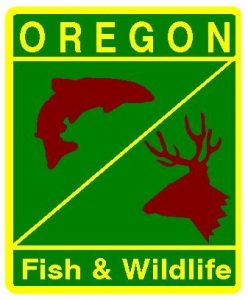 Since 2014, Oregon has spent $2.4 million it collected from a $9.75 Columbia River Endorsement tag on largely recreational fishing enhancements and research. None went to the commercial gill-net industry. At the request of The Oregonian/OregonLive, the released a dollar-specific, detailed accounting of expenditures from the endorsement fund late Friday. Agency officials hope to have the information available soon on the department’s Web site. Also detailed is $2.5 million set aside by the Oregon Legislature — $1.5 million per biennium – for assisting a transition of commercial fishing away from mainstem gill-netting. None of that money went directly to the commercial industry either. There is an additional $500,000 biennial fund for commercial netters to invest in newer, alternative fishing equipment, but department officials said no one has yet applied for any of the accumulated $1 million. Read the story here 12:04
Since 2014, Oregon has spent $2.4 million it collected from a $9.75 Columbia River Endorsement tag on largely recreational fishing enhancements and research. None went to the commercial gill-net industry. At the request of The Oregonian/OregonLive, the released a dollar-specific, detailed accounting of expenditures from the endorsement fund late Friday. Agency officials hope to have the information available soon on the department’s Web site. Also detailed is $2.5 million set aside by the Oregon Legislature — $1.5 million per biennium – for assisting a transition of commercial fishing away from mainstem gill-netting. None of that money went directly to the commercial industry either. There is an additional $500,000 biennial fund for commercial netters to invest in newer, alternative fishing equipment, but department officials said no one has yet applied for any of the accumulated $1 million. Read the story here 12:04
Queensland Prawn importers under investigation for biosecurity breach
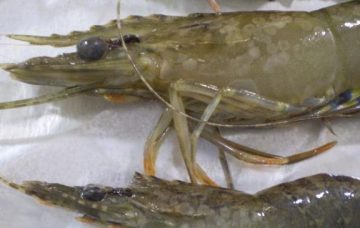 A number of prawn suppliers and importers are under investigation for not meeting biosecurity measures in the time leading up to a disease outbreak. The Department of Agriculture and Water Services had been investigating the suppliers and importers since August 2016, five months before it became public that white spot disease had been detected in Queensland. Since December five prawn farms had tested positive for the virus, which causes a high death rate in the crustacean, and the import of green prawns had been banned indefinitely. The maximum penalty if the suppliers and importers are found to have been illegally importing goods for a commercial advantage under the Biosecurity Act 2015 is 10 years in prison or $360,000 or both. Read the story here 10:06
A number of prawn suppliers and importers are under investigation for not meeting biosecurity measures in the time leading up to a disease outbreak. The Department of Agriculture and Water Services had been investigating the suppliers and importers since August 2016, five months before it became public that white spot disease had been detected in Queensland. Since December five prawn farms had tested positive for the virus, which causes a high death rate in the crustacean, and the import of green prawns had been banned indefinitely. The maximum penalty if the suppliers and importers are found to have been illegally importing goods for a commercial advantage under the Biosecurity Act 2015 is 10 years in prison or $360,000 or both. Read the story here 10:06
COASTAL CONSERVATION ASSOCIATION v. UNITED STATES DEPARTMENT OF COMMERCE
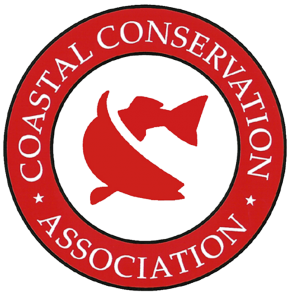 Several private anglers and the Coastal Conservation Association, a group representing private anglers (collectively, CCA), appeal the district court’s summary judgment dismissal of their lawsuit, which challenged Amendment 40 to the Reef Fish Fishery Management Plan and the Final Rule implementing that amendment. Because we find that Amendment 40 is consistent with its organic statute and was properly devised and implemented, we AFFIRM the judgment of the district court. This dispute centers on the management of the red snapper fishery in the Gulf of Mexico. Read the complaint here 09:28
Several private anglers and the Coastal Conservation Association, a group representing private anglers (collectively, CCA), appeal the district court’s summary judgment dismissal of their lawsuit, which challenged Amendment 40 to the Reef Fish Fishery Management Plan and the Final Rule implementing that amendment. Because we find that Amendment 40 is consistent with its organic statute and was properly devised and implemented, we AFFIRM the judgment of the district court. This dispute centers on the management of the red snapper fishery in the Gulf of Mexico. Read the complaint here 09:28
Shad: Following the history and biology of a East Coast transplant
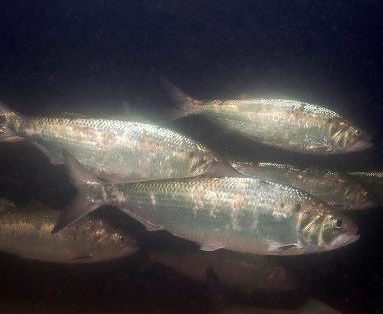 Shad were one of the largest commercial fisheries in the East during the 19th century, but overharvesting and heavy pollution prior to the environmental enlightenment of the 1970s saw the population drop faster than heavy shad dart in a slow current. Commercial harvests on the East Coast declined from nearly 20 million pounds in the 1870s to less than 2 million a hundred years later. In 1871, forward-thinking individuals at the United States Fish and Wildlife Service decided to transport shad from New York’s Hudson River to the Sacramento River in California’s Central Valley. The reasoning for this move was, in part, to add commercial and sport fisheries, as well as add another plentiful food source to the quickly swelling population of a post-Gold Rush California. Read the story here 08:41
Shad were one of the largest commercial fisheries in the East during the 19th century, but overharvesting and heavy pollution prior to the environmental enlightenment of the 1970s saw the population drop faster than heavy shad dart in a slow current. Commercial harvests on the East Coast declined from nearly 20 million pounds in the 1870s to less than 2 million a hundred years later. In 1871, forward-thinking individuals at the United States Fish and Wildlife Service decided to transport shad from New York’s Hudson River to the Sacramento River in California’s Central Valley. The reasoning for this move was, in part, to add commercial and sport fisheries, as well as add another plentiful food source to the quickly swelling population of a post-Gold Rush California. Read the story here 08:41
Value of Maine lobster exports to China on pace to triple for 2016
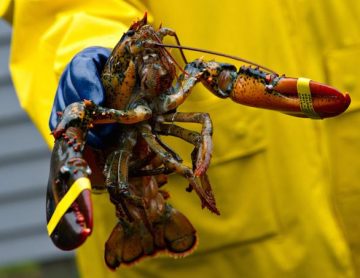 Live lobster exports to China are on pace to triple in value in 2016, despite the incursion of some new lobster suppliers to the growing Asian market. Final figures for 2016 won’t be known until February, but through November, the value of live lobster shipments from Maine to China climbed to $27.5 million, nearly tripling from the $10.2 million reported in November 2015. That’s roughly half the total export of live lobsters from Maine to date, excluding Canada, where many Maine lobsters are processed and then imported back into Maine for distribution. And those figures don’t include the traditional year-end surge leading up the Chinese New Year on Jan. 28, when Chinese celebrants have been serving up lobster from Maine, Massachusetts and Canada in ever-increasing numbers. Read the story here 08:17
Live lobster exports to China are on pace to triple in value in 2016, despite the incursion of some new lobster suppliers to the growing Asian market. Final figures for 2016 won’t be known until February, but through November, the value of live lobster shipments from Maine to China climbed to $27.5 million, nearly tripling from the $10.2 million reported in November 2015. That’s roughly half the total export of live lobsters from Maine to date, excluding Canada, where many Maine lobsters are processed and then imported back into Maine for distribution. And those figures don’t include the traditional year-end surge leading up the Chinese New Year on Jan. 28, when Chinese celebrants have been serving up lobster from Maine, Massachusetts and Canada in ever-increasing numbers. Read the story here 08:17
Fishing industry backs Chris Oliver for NMFS director
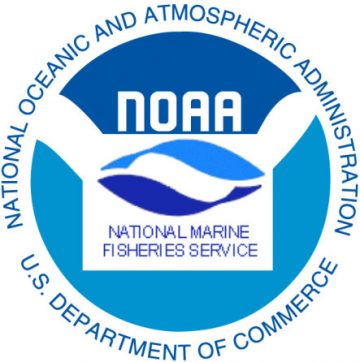 A coalition of commercial fishing, Native and environmental entities is backing Chris Oliver, executive director of the North Pacific Fishery Management Council, to become the next head of the National Marine Fisheries Service. The more than four dozen signers of a letter sent to the Trump administration on Jan. 23 included processors Trident Seafoods and Icicle Seafoods, Alaska Bering Sea Crabbers, Alaska Marine Conservation Council, At Sea Processors Association, Bristol Bay Economic Development Corp., Fishing Vessel Owners Association, Pacific Seafoods Processors Association, United Catcher Boats, and United Fishermen’s Marketing Association. Read the story here 07:42 More information can be found here
A coalition of commercial fishing, Native and environmental entities is backing Chris Oliver, executive director of the North Pacific Fishery Management Council, to become the next head of the National Marine Fisheries Service. The more than four dozen signers of a letter sent to the Trump administration on Jan. 23 included processors Trident Seafoods and Icicle Seafoods, Alaska Bering Sea Crabbers, Alaska Marine Conservation Council, At Sea Processors Association, Bristol Bay Economic Development Corp., Fishing Vessel Owners Association, Pacific Seafoods Processors Association, United Catcher Boats, and United Fishermen’s Marketing Association. Read the story here 07:42 More information can be found here
International Pacific Halibut Commission approves increases in halibut catch limits
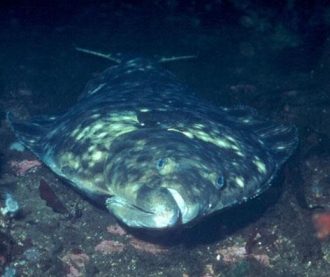 Most parts of the Pacific coastline will see an increase in commercial and charter fishing catch limits for halibut this year. The International Pacific Halibut Commission Friday approved a coast-wide catch limit of 31.4 million pounds of the valuable bottom fish. That’s an increase from just under 30 million pounds last year. Several parts of the coast were facing catch limit cuts based on alternatives presented by IPHC scientists. However, commissioners voted to boost harvest limits instead of making reductions. There was some disagreement about the BC catch limit this year. Listen to the audio report or read it here 19:11
Most parts of the Pacific coastline will see an increase in commercial and charter fishing catch limits for halibut this year. The International Pacific Halibut Commission Friday approved a coast-wide catch limit of 31.4 million pounds of the valuable bottom fish. That’s an increase from just under 30 million pounds last year. Several parts of the coast were facing catch limit cuts based on alternatives presented by IPHC scientists. However, commissioners voted to boost harvest limits instead of making reductions. There was some disagreement about the BC catch limit this year. Listen to the audio report or read it here 19:11
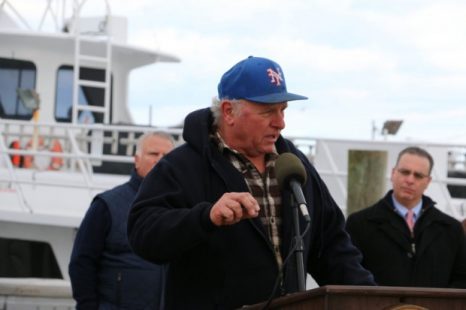
N.J. fishermen, officials demand feds back off of proposed flounder limits
In a unified show of support, New Jersey officials and leaders of the state’s fishing industry said Friday they are demanding the federal government abandon plans to cut the amount of fluke to be harvested this year. Insisting the proposed new limits will devastate an industry important to New Jersey’s economy, the government and industry representatives said they’re prepared to mount a legal fight, if necessary, to fight “ridiculous” limits that were based on “flawed” data. Jim Lovgren, a fishing boat captain and director of the Fishermen’s Dock Cooperative, said fishermen already experienced a 30-percent reduction in limits last year and face yet another 17- or 18-percent cut next year. The Point Pleasant Beach cooperative he heads pulls in about 2 million pounds of flounder annually. “Taking 30 percent of that last year hurt. It hurt me economically. It hurt everybody over there. It hurt everybody here,” he said to the crowd. Photo gallery of 21 images, Read the story here 16:54
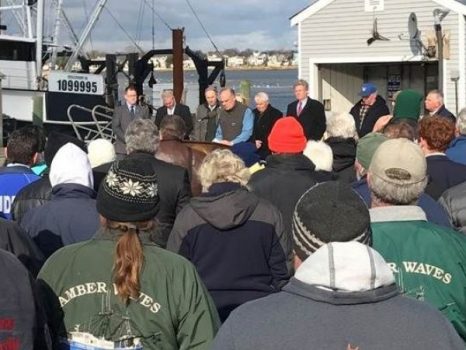
DEP Commissioner Bob Martin Says Proposed Fluke Quota Cut Would Cripple Fishing, Kill Jobs
Proposals that would cut New Jersey’s share of the fluke fishing quota in by 50 percent would cripple the fishing industry, kill potentially thousands of jobs and damage the state’s tourism industry, state Department of Environmental Protection Commissioner Bob Martin said Friday. Martin joined federal and state lawmakers, leaders of the state’s recreational and commercial fishing industries, anglers, and people whose livelihoods rely on fishing at a rally in Point Pleasant Beach to oppose the proposed drastic cuts to the recreational harvest of summer flounder, also known as fluke. The rally follows votes last month by the Atlantic States Marine Fisheries Commission and the Mid-Atlantic Fishery Management Council that would likely result in an increase in the size of individual summer flounder anglers can keep, as well as a decrease in number of fish that may be kept each day, and a reduction in season length. Read the rest of the story here 15:36
These California and Oregon farmers lost water in 2001. Now they want to be paid.
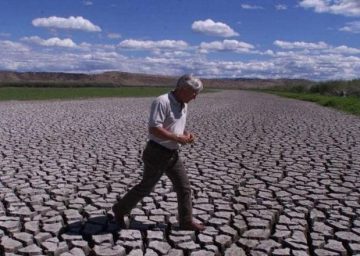 Northern California and Oregon farmers who lost irrigation water in 2001 for the sake of fish are plunging into a climactic courtroom battle for tens of millions of dollars in compensation. Years in the making, the trial set to start Monday in the U.S. Court of Federal Claims near the White House involves a lot of money, but that’s not all. For other Westerners, too, it can have broader implications, clarifying what the government may owe for water steered away from crops toward environmental protection. “It’s a civil rights case, at bottom,” farmers’ attorney Nancie Marzulla said in an interview. “It involves the protection of private property. We all expect the government to respect private property rights.” The same court ruled in 2001, for instance, that the federal government had taken water without paying compensation to California’s Tulare Lake Basin Water Storage District and others that had been deprived of water for the sake of the delta smelt and the winter-run chinook salmon. The judge later concluded the water districts were owed $13.9 million plus interest, and the case is still cited. Read the rest of the story here 15:10
Northern California and Oregon farmers who lost irrigation water in 2001 for the sake of fish are plunging into a climactic courtroom battle for tens of millions of dollars in compensation. Years in the making, the trial set to start Monday in the U.S. Court of Federal Claims near the White House involves a lot of money, but that’s not all. For other Westerners, too, it can have broader implications, clarifying what the government may owe for water steered away from crops toward environmental protection. “It’s a civil rights case, at bottom,” farmers’ attorney Nancie Marzulla said in an interview. “It involves the protection of private property. We all expect the government to respect private property rights.” The same court ruled in 2001, for instance, that the federal government had taken water without paying compensation to California’s Tulare Lake Basin Water Storage District and others that had been deprived of water for the sake of the delta smelt and the winter-run chinook salmon. The judge later concluded the water districts were owed $13.9 million plus interest, and the case is still cited. Read the rest of the story here 15:10
Bumble Bee Pleads Guilty in Industrial Oven Death of Worker Jose Melena
 Bumble Bee LLC pleaded guilty Wednesday to a misdemeanor charge stemming from the death of a Wilmington man who was cooked for two hours while trapped inside an industrial oven working at the company’s Santa Fe Springs plant. “I’ve … been a prosecutor for more than 20 years. I’ve tried more than 40 murder cases, and this is the worst circumstances of death I have ever, ever witnessed,” a deputy D.A. said. “I think any person would prefer to be, if they had to die some way … to be shot or stabbed than to be slowly cooked to death in an oven.” The pleas — which were anticipated under a $6 million settlement reached with the San Diego-based company in 2015 — stem from the Oct. 11, 2012, death of 62-year-old Jose Melena. Melena entered a 35-foot-long cylindrical oven used to sterilize cans of tuna at the plant. Co-workers, who were unaware that he was inside the oven, loaded 12,000 pounds of canned tuna and inadvertently trapped him in the back of the oven. He was found dead after the two-hour sterilization process. After the 2015 hearing, Chun described the circumstances of Melena’s death as “about as bad as you can imagine.” Read the rest of the story here 13:31
Bumble Bee LLC pleaded guilty Wednesday to a misdemeanor charge stemming from the death of a Wilmington man who was cooked for two hours while trapped inside an industrial oven working at the company’s Santa Fe Springs plant. “I’ve … been a prosecutor for more than 20 years. I’ve tried more than 40 murder cases, and this is the worst circumstances of death I have ever, ever witnessed,” a deputy D.A. said. “I think any person would prefer to be, if they had to die some way … to be shot or stabbed than to be slowly cooked to death in an oven.” The pleas — which were anticipated under a $6 million settlement reached with the San Diego-based company in 2015 — stem from the Oct. 11, 2012, death of 62-year-old Jose Melena. Melena entered a 35-foot-long cylindrical oven used to sterilize cans of tuna at the plant. Co-workers, who were unaware that he was inside the oven, loaded 12,000 pounds of canned tuna and inadvertently trapped him in the back of the oven. He was found dead after the two-hour sterilization process. After the 2015 hearing, Chun described the circumstances of Melena’s death as “about as bad as you can imagine.” Read the rest of the story here 13:31
Coast Guard medevacs fisherman near Cold Bay, Alaska
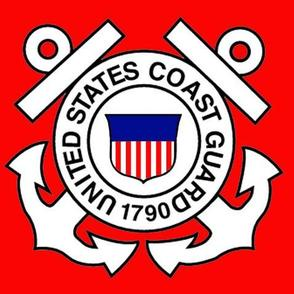 A Coast Guard Air Station Kodiak MH-60 Jayhawk rescue helicopter crew forward deployed in Cold Bay, medevaced a man from the fishing vessel American Dynasty approximately 60 nautical miles north of Cold Bay, Thursday afternoon. The 59-year-old fisherman was hoisted and transported to Cold Bay where he was met by Guardian Flight personnel for further transfer to Anchorage. Watchstanders at Coast Guard District Seventeen received notification from Health Force Partners requesting a medevac for a crewmember aboard the American Dynasty who was suffering from symptoms of appendicitis. The duty flight surgeon recommended the medevac and the helicopter crew was dispatched. Weather on scene during the time of the medevac was reported as 20-mph winds with six to eight-foot seas and four miles of visibility. link 10:46
A Coast Guard Air Station Kodiak MH-60 Jayhawk rescue helicopter crew forward deployed in Cold Bay, medevaced a man from the fishing vessel American Dynasty approximately 60 nautical miles north of Cold Bay, Thursday afternoon. The 59-year-old fisherman was hoisted and transported to Cold Bay where he was met by Guardian Flight personnel for further transfer to Anchorage. Watchstanders at Coast Guard District Seventeen received notification from Health Force Partners requesting a medevac for a crewmember aboard the American Dynasty who was suffering from symptoms of appendicitis. The duty flight surgeon recommended the medevac and the helicopter crew was dispatched. Weather on scene during the time of the medevac was reported as 20-mph winds with six to eight-foot seas and four miles of visibility. link 10:46
Federal Fisheries Minister Dominic LeBlanc says Canada has a right to scientific analysis of Corexit
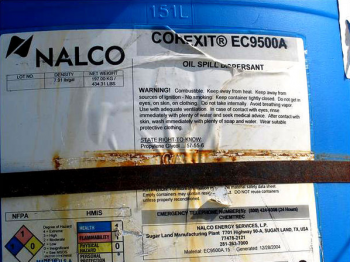 Canada’s fisheries minister is pushing back against a U.S. company that is refusing to let Canadian researchers test its oil spill dispersant. “We obviously have a huge concern about a potential corporate interest that appears to not want to have robust, thoughtful, independent scientific analysis of their product,” said Dominic LeBlanc. LeBlanc, speaking in Halifax, was talking about the months-long impasse over his department’s attempt to test Corexit 9580, a surface-washing agent used to clean beaches in oil spills. The product, along with Corexit 9500 — an open-water oil dispersant — were approved for use in Canada last year on a case-by-case basis if authorities determine there is a net environmental benefit. Read the rest here 09:57
Canada’s fisheries minister is pushing back against a U.S. company that is refusing to let Canadian researchers test its oil spill dispersant. “We obviously have a huge concern about a potential corporate interest that appears to not want to have robust, thoughtful, independent scientific analysis of their product,” said Dominic LeBlanc. LeBlanc, speaking in Halifax, was talking about the months-long impasse over his department’s attempt to test Corexit 9580, a surface-washing agent used to clean beaches in oil spills. The product, along with Corexit 9500 — an open-water oil dispersant — were approved for use in Canada last year on a case-by-case basis if authorities determine there is a net environmental benefit. Read the rest here 09:57
Wakulla Fishermen Losing Traditional Harvest Areas, Call for End to Leasing
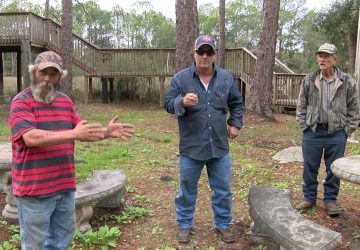 Fishermen in Wakulla County are concerned about the rise in the amount of leases on their waters. The leases provide boundaries as to where fishermen can and cannot go to get fish. Poles and barriers indicate assigned zones. Some fishermen say their boats have been damaged by them, claiming poor visibility due to a lack of lighting and the tide changing sea levels. Fishermen say the state keeps giving leases out, which zones off territory they’ve used for years. “It’s killing all of us up here,” said Albert Hartsfield, vice president of the Wakulla Commercial Fishermen’s Association (WCFA). “They’ve blocked up channels and everything.” “Don’t put my guys out of business,” said John Taylor, president of the WCFA. “They need this water to make their livelihood.” Video, Read the rest here 09:01
Fishermen in Wakulla County are concerned about the rise in the amount of leases on their waters. The leases provide boundaries as to where fishermen can and cannot go to get fish. Poles and barriers indicate assigned zones. Some fishermen say their boats have been damaged by them, claiming poor visibility due to a lack of lighting and the tide changing sea levels. Fishermen say the state keeps giving leases out, which zones off territory they’ve used for years. “It’s killing all of us up here,” said Albert Hartsfield, vice president of the Wakulla Commercial Fishermen’s Association (WCFA). “They’ve blocked up channels and everything.” “Don’t put my guys out of business,” said John Taylor, president of the WCFA. “They need this water to make their livelihood.” Video, Read the rest here 09:01
Experts say BC salmon stocks not diminished by sea lice outbreak for now
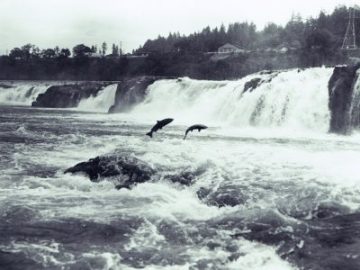 The price of salmon has shot up more than 15 per cent over the last three months, thanks to fish stocks being hit worldwide by an outbreak of sea lice. In Norway and Scotland, two of the world’s largest suppliers of salmon, sea lice outbreaks have made prices rise by a full 50 per cent, coupled with a huge algae bloom in Chile, the world’s second biggest producer of farmed salmon, and global production is down by nine per cent. But the market for Pacific salmon is not likely to see the same price spikes, according to Glen Spain of the Pacific Coast Federation of Fishermen’s Associations, who says that sea lice has so far been less of a scourge for Pacific Coast salmon. The tiny, naturally occurring parasite, found in both wild and farmed salmon, last proved to be a menace on the West Coast in 2015, when infestations were at their highest in five years. Read the story here 07:49
The price of salmon has shot up more than 15 per cent over the last three months, thanks to fish stocks being hit worldwide by an outbreak of sea lice. In Norway and Scotland, two of the world’s largest suppliers of salmon, sea lice outbreaks have made prices rise by a full 50 per cent, coupled with a huge algae bloom in Chile, the world’s second biggest producer of farmed salmon, and global production is down by nine per cent. But the market for Pacific salmon is not likely to see the same price spikes, according to Glen Spain of the Pacific Coast Federation of Fishermen’s Associations, who says that sea lice has so far been less of a scourge for Pacific Coast salmon. The tiny, naturally occurring parasite, found in both wild and farmed salmon, last proved to be a menace on the West Coast in 2015, when infestations were at their highest in five years. Read the story here 07:49
Fisherman facing life in prison after finding 20 kilo’s of cocaine at sea, setting up a distribution ring
 The question is often light-heartedly posited among friends in coastal towns of what one would do if he were to discover a bail of washed-up narcotics. Local fisherman Thomas Zachary Breeding, 32, chose to distribute for sale the 20 kilograms of cocaine he found – and he advises you not do the same. “This changed my life and way of thinking and also made me aware of some of the dangers that can be found off shore in the Gulf,” Breeding wrote recently in a letter to The News Herald from the Washington County Jail, where he is being held to await his sentence for conspiracy to distribute a controlled substance. “I would like to let the public know the dangers and what not to do if this situation comes about.” Breeding was one of five individuals arrested in summer 2016 on charges of conspiracy to distribute a controlled substance. The group was indicted by a federal grand jury in September after Breeding found 20 kilograms of cocaine – the equivalent of about 45 pounds – while out at sea and set up a distribution network with the other people. Read the story here Another article, click here 16:16
The question is often light-heartedly posited among friends in coastal towns of what one would do if he were to discover a bail of washed-up narcotics. Local fisherman Thomas Zachary Breeding, 32, chose to distribute for sale the 20 kilograms of cocaine he found – and he advises you not do the same. “This changed my life and way of thinking and also made me aware of some of the dangers that can be found off shore in the Gulf,” Breeding wrote recently in a letter to The News Herald from the Washington County Jail, where he is being held to await his sentence for conspiracy to distribute a controlled substance. “I would like to let the public know the dangers and what not to do if this situation comes about.” Breeding was one of five individuals arrested in summer 2016 on charges of conspiracy to distribute a controlled substance. The group was indicted by a federal grand jury in September after Breeding found 20 kilograms of cocaine – the equivalent of about 45 pounds – while out at sea and set up a distribution network with the other people. Read the story here Another article, click here 16:16
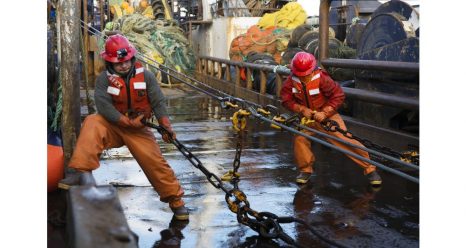
Harvesting flatfish in the Last Frontier
Docked in Seattle a few days after Thanksgiving, the F/T Constellation is still filled with the smell of coastal Alaska waters; briny ocean and fresh fish. It wafts up from the lower levels and covers the deck. The vessel has been scrubbed and scoured, but the aroma is impossible to shake. The 165-foot vessel spent the better part of 2016 trawling the Bering Sea. For months, it carried several dozen crewmembers, decks full of equipment and freezers full of fresh seafood. It motored in and out of Dutch Harbor, the fishing capital of the Aleutian Island chain. While it’ll spend the early winter in Seattle, the break is brief—the vessel heads north again each year when the fishing season resumes in January. Built in Louisiana and based in Washington, the Constellation is crewed by men from all over the world. But it’s also distinctly Alaskan; part of a hardy fleet fueling local economies throughout the Southwest. Read the story here 13:25
Fluke Cut Rally scheduled for Friday, 10 am at Fishermen’s Supply in Point Pleasant Beach
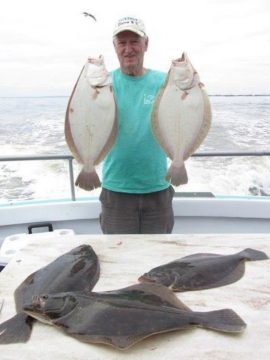 A rally against the proposed cuts to the summer flounder harvest is planned for this Friday morning in the parking lot of Fishermen’s Supply in Point Pleasant Beach. Along with members of the fishing community, the commissioner of the state Department of Environmental Protection Bob Martin and U.S. Congressman Frank Pallone (D-N.J.) will lead the rally and speak in opposition to the harvest reduction. Both Martin and Pallone have been critical of the Atlantic State Marine Fisheries Commission and the Mid-Atlantic Fishery Management for their proposed drastic cuts to the summer flounder harvest. Pallone has been outspoken against the science used to count fish landings and stock biomass that has led those management bodies to conclude that anglers overfished their quota last year and the biomass of summer flounder is shrinking. Read the rest here 12:32
A rally against the proposed cuts to the summer flounder harvest is planned for this Friday morning in the parking lot of Fishermen’s Supply in Point Pleasant Beach. Along with members of the fishing community, the commissioner of the state Department of Environmental Protection Bob Martin and U.S. Congressman Frank Pallone (D-N.J.) will lead the rally and speak in opposition to the harvest reduction. Both Martin and Pallone have been critical of the Atlantic State Marine Fisheries Commission and the Mid-Atlantic Fishery Management for their proposed drastic cuts to the summer flounder harvest. Pallone has been outspoken against the science used to count fish landings and stock biomass that has led those management bodies to conclude that anglers overfished their quota last year and the biomass of summer flounder is shrinking. Read the rest here 12:32
Canadian researchers denied samples of oil spill dispersant Corexit 9500, Corexit 9580 by Nalco Environmental Solutions
 Canada’s Department of Fisheries and Oceans says it will try again to secure samples of an oil spill dispersant for testing by government-funded researchers after the American manufacturer refused two requests in 2016. The impasse surrounds research by fish biologist Craig Purchase of Memorial University of Newfoundland in St. John’s. Purchase was working on a $75,000 project funded by DFO comparing two types of oil dispersant products called Corexit on beach-spawning capelin. But he never got the chance to compare Corexit 9500 — an open ocean oil spill dispersant — with Corexit 9580, a surface agent used to clean beaches. He was able to get a sample of the oil spill dispersant from DFO but the manufacturer, Nalco Environmental Solutions, refused to provide Purchase with a sample of the beach cleaning agent Corexit 9580 last April. Nalco refused again when DFO asked for a sample on his behalf. Read the story here 09:24 Read this Corexit’s Deadly Legacy
Canada’s Department of Fisheries and Oceans says it will try again to secure samples of an oil spill dispersant for testing by government-funded researchers after the American manufacturer refused two requests in 2016. The impasse surrounds research by fish biologist Craig Purchase of Memorial University of Newfoundland in St. John’s. Purchase was working on a $75,000 project funded by DFO comparing two types of oil dispersant products called Corexit on beach-spawning capelin. But he never got the chance to compare Corexit 9500 — an open ocean oil spill dispersant — with Corexit 9580, a surface agent used to clean beaches. He was able to get a sample of the oil spill dispersant from DFO but the manufacturer, Nalco Environmental Solutions, refused to provide Purchase with a sample of the beach cleaning agent Corexit 9580 last April. Nalco refused again when DFO asked for a sample on his behalf. Read the story here 09:24 Read this Corexit’s Deadly Legacy
In Chesapeake Bay’s changing ecosystem, blue crab is king (and moving north)
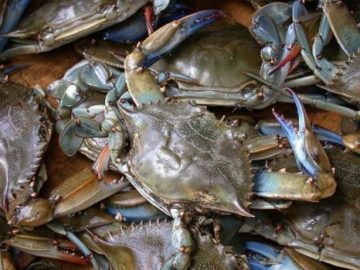 In the face of an evolving ecosystem, experts agree many of the differences in Chesapeake Bay marine life can – at least in part – be attributed to a worldwide warming trend. Over the last three decades, water temperatures in the Chesapeake Bay have increased about 1.5 degrees Celsius, or about 2.7 degrees Fahrenheit, said Rom Lipcius, professor of marine science at the Virginia Institute of Marine Science. The change means populations of many native sea creatures in the Chesapeake have moved or expanded north in search of cooler water temperatures, and other non-native creatures have moved in. As the warming trend continues, experts say some marine species will thrive as others struggle to survive in the face of temperature, environment and predator and prey changes. “It’s not all bad news, and it’s not all good news,” said Jon Hare, science and research director for the National Oceanic and Atmospheric Administration’s Northeast Fisheries Science Center. “There are both winners and losers in this situation.” There have been a number of species, including blue crab, scup and black sea bass, that have shifted or extended northward along the Atlantic coast, said Hare. Read the story here 08:35
In the face of an evolving ecosystem, experts agree many of the differences in Chesapeake Bay marine life can – at least in part – be attributed to a worldwide warming trend. Over the last three decades, water temperatures in the Chesapeake Bay have increased about 1.5 degrees Celsius, or about 2.7 degrees Fahrenheit, said Rom Lipcius, professor of marine science at the Virginia Institute of Marine Science. The change means populations of many native sea creatures in the Chesapeake have moved or expanded north in search of cooler water temperatures, and other non-native creatures have moved in. As the warming trend continues, experts say some marine species will thrive as others struggle to survive in the face of temperature, environment and predator and prey changes. “It’s not all bad news, and it’s not all good news,” said Jon Hare, science and research director for the National Oceanic and Atmospheric Administration’s Northeast Fisheries Science Center. “There are both winners and losers in this situation.” There have been a number of species, including blue crab, scup and black sea bass, that have shifted or extended northward along the Atlantic coast, said Hare. Read the story here 08:35
ITS HUGE! Grey Sole limits nearly doubled as scientists use ’empirical approach’ to set new specifications
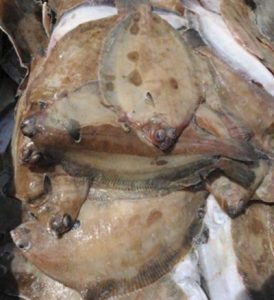 Meeting in Portsmouth, New Hampshire, the New England Fishery Management Council approved an acceptable biological catch of 878 metric tons of witch flounder, also known as grey sole, for 2017. When adjusted for management uncertainty, the move will result in a 2017 annual catch limit of 839 metric tons — nearly twice the 2016 annual catch limit of 441 metric tons. The unanimous vote by the council also underscored the escalating distrust commercial groundfishermen reserve for the science NOAA Fisheries uses to fuel its stock assessments. In December, NOAA Fisheries scientists were forced to concede that the model being used to develop the witch flounder stock assessment was irretrievably flawed after it failed the peer review phase of the process. Read the story here 07:51
Meeting in Portsmouth, New Hampshire, the New England Fishery Management Council approved an acceptable biological catch of 878 metric tons of witch flounder, also known as grey sole, for 2017. When adjusted for management uncertainty, the move will result in a 2017 annual catch limit of 839 metric tons — nearly twice the 2016 annual catch limit of 441 metric tons. The unanimous vote by the council also underscored the escalating distrust commercial groundfishermen reserve for the science NOAA Fisheries uses to fuel its stock assessments. In December, NOAA Fisheries scientists were forced to concede that the model being used to develop the witch flounder stock assessment was irretrievably flawed after it failed the peer review phase of the process. Read the story here 07:51
Industrial grade corrosion inhibitor, lubricant and cleaner prevents and removes rust, protects engines and critical equipment
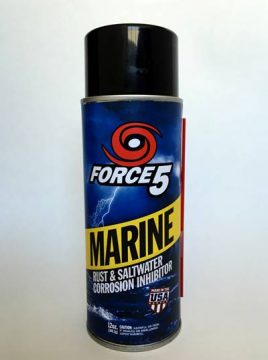 For ship and vessel owners that struggle with corrosion caused by water, humidity, condensation, salt air and environmental contaminants, Force5 Marine works as corrosion inhibiter, lubricant and cleaner to protect engines and critical equipment and keep it in good working order. The harsh marine environment costs an estimated $50-80 billion in corrosion related damage worldwide, and can lead to the failure of critical equipment including engines, fittings, valves, switches, lighting, and electrical gear if not properly maintained. The Force5 Marine spray protectant penetrates into metal parts to prevent rust and corrosion, while forming a bond that repels salt water and other contaminants. Read the rest here 07:20
For ship and vessel owners that struggle with corrosion caused by water, humidity, condensation, salt air and environmental contaminants, Force5 Marine works as corrosion inhibiter, lubricant and cleaner to protect engines and critical equipment and keep it in good working order. The harsh marine environment costs an estimated $50-80 billion in corrosion related damage worldwide, and can lead to the failure of critical equipment including engines, fittings, valves, switches, lighting, and electrical gear if not properly maintained. The Force5 Marine spray protectant penetrates into metal parts to prevent rust and corrosion, while forming a bond that repels salt water and other contaminants. Read the rest here 07:20
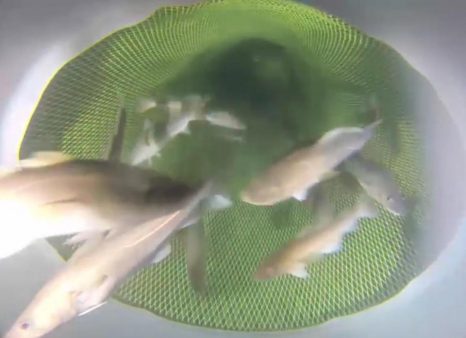
New SMAST camera can help assess cod stocks in Gulf of Maine
Researchers from UMass Dartmouth say they have successfully tested an underwater video-survey system that they hope will provide an accurate method to assess Atlantic cod stocks. In collaboration with fishermen, the research team recently placed high-resolution cameras in an open-ended commercial trawl net on Stellwagen Bank in the Gulf of Maine, known as one of the world’s most active marine sanctuaries. The cameras captured images of cod and other groundfish as they passed through the net. Periodically, researchers from UMD’s School for Marine Science & Technology closed the net for short periods to collect length, weight, and take other biological samples from some of the fish. The fish are unharmed and are returned to the sea. The system is design to be portable, so scientists can set it up on different fishing vessels. Professor Kevin Stokesbury, head researcher on the project, said the video system is an important tool at a time of uncertainty about the groundfish stock in the Gulf of Maine. Read the story here 17:57 Read the press release and watch the video here






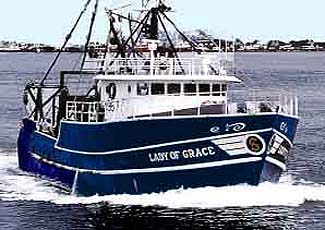 On this day in 2007, the Coast Guard launched a massive search for the Fishing Vessel Lady of Grace after the 75-foot dragger failed to return as scheduled to New Bedford. The four-man crew of the boat was last heard from the night before, struggling to cross Nantucket Sound in a winter gale with 6- to 9-foot seas buffeting the Sound. Using side scan sonar, Coast Guard personnel located the sunken vessel 12 miles south of Hyannis one day after the search began. The bodies of Lady of Grace captain Antonio Barroqueiro and crew member Mario Farinhas were recovered, but two other crew members, Rogerio Ventura and Joao Silva – were never found. Read the stories about this tragedy starting with previous problem with the boat
On this day in 2007, the Coast Guard launched a massive search for the Fishing Vessel Lady of Grace after the 75-foot dragger failed to return as scheduled to New Bedford. The four-man crew of the boat was last heard from the night before, struggling to cross Nantucket Sound in a winter gale with 6- to 9-foot seas buffeting the Sound. Using side scan sonar, Coast Guard personnel located the sunken vessel 12 miles south of Hyannis one day after the search began. The bodies of Lady of Grace captain Antonio Barroqueiro and crew member Mario Farinhas were recovered, but two other crew members, Rogerio Ventura and Joao Silva – were never found. Read the stories about this tragedy starting with previous problem with the boat 


























